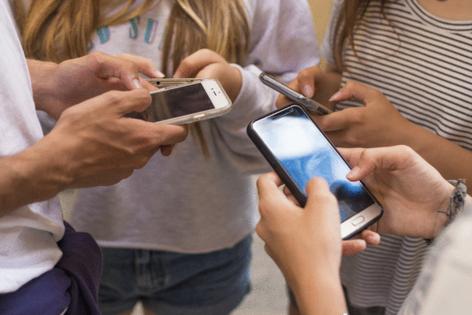Commentary: Reality bytes -- Kids confuse the real world with the screen world
Published in Home and Consumer News
Doesn’t it feel like summer break just began? Yet here we are again. Fall’s arrival means kids have settled into a new school year with new teachers, new clothes and a new “attitude” for parents and kids alike, to start on the right foot.
Yet it’s hard for any of us to find footing in an increasingly polarized and isolated world. The entire nation is grappling with a rising tide of mental health concerns — including the continually increasing alienation and loneliness in children — and parents are struggling to foster real human connection for their kids in the real world. The battle to minimize screen time is certainly one approach. But in a world that is based on screens, apps and social media, is it a battle that realistically can be won?
If we want to reduce screens’ negative impact on our children’s mental health, what we need is a “hard reset” of their relationships with their devices by ensuring they are deeply aware of the difference between the real world and the screen world.
I’ve spent the last eight years focused on showing people the difference between these worlds, helping bring them back together, in person, to bridge divides and foster authentic human connection, conversation and community. Like the people I work with, parents can help their children understand the difference between the two worlds through a two-part plan: first, by hard-resetting their misguided relationships with their screen and, second, by intentionally connecting them to others in real life.
Remember when the end of “The Wizard of Oz” revealed that the wizard was just a man behind a curtain? To break a child’s toxic relationship with their screen, parents need to pull back another curtain to show their kids exactly how all media works, from social media and news companies to search engines and apps.
Almost everything kids see on their screens is an edit, and behind almost every edit is a similar intention: more likes, followers and users that can be monetized. Through the attention extraction model, most everything that appears on our screen is designed to maximize our attention for profit, feeding us more content, regardless of the impact it may have on us individually and as a society. If, as a family, you haven’t yet watched the documentary “The Social Dilemma,” the start of the year is a perfect time.
Helping kids realize that the structure of social media is not made with their well-being in mind — in fact, it has a very different motive — can help them recognize that they are not alone in their feelings and reactions to the screen. According to Pew Research, 31 percent of teens say social media makes them feel like their friends are leaving them out and 23% say what they see on social media makes them feel worse about their own life. Talking with their peers less about what is on their screen, but rather how their screen makes them feel, is a point of connection they may not realize.
Having spent nearly a decade connecting people, it is clear that one of the secrets to connection in the real world is the introduction. In other words, how people are introduced to one another often sets up the way they will see one another. Based on the primary-recency effect, when people first connect through the two-dimensional edits in the screen world, they make assumptions that lean into pre-conceived notions of how the “other” should be. In a country growing increasingly polarized and dehumanized by social media echo chambers and a profound lack of human connection, this reality impacts our children, who have less real world experiences under their belts.
The beginning of a school year offers a timely opportunity to allow children the space to paint a more complete picture of their new classmates before screens intervene. A simple initialism, EPIC, can provide parents with four techniques for making sure interactions are maximized for connection and trust.
Equalization: What are the meaningful overlaps of life experiences that your child and those around them share? Have them seek similarities, rather than differences, with the kids they are about to meet. If they change what they are looking for, it will change what they see.
Personalization: In a world of infinite edits of information that make it hard to find common ground, encourage your child to personalize what they think based on their own life experiences, rather than regurgitate information they absorbed from their screen.
Investigation: When people meet for the first time, they often feel anxious about what they are going to say. Suggest your child focus on trying to learn and understand the other person rather than worrying about their responses.This empathy will be felt by the other person, and is a powerful driver of trust and connection.
Collaboration: Many young adults feel overwhelmed by the burden of social interactions, fearing if it goes wrong it’s all their fault. Social interactions are less worrisome when people remember both sides are equal participants in a collaboration and it’s not all on them.
If we use this time at the start of every year to teach children the realities of the screens they use and how to intentionally foster deeper, real world introductions, they will create a future for themselves and others empowered and enriched by social connections, not fearful of them.
_____
Patel is an executive producer/director, the creator of “ ConnectEffect” and a Builders movement partner.
_____
©2024 The Fulcrum. Visit at thefulcrum.us. Distributed by Tribune Content Agency, LLC.








Comments